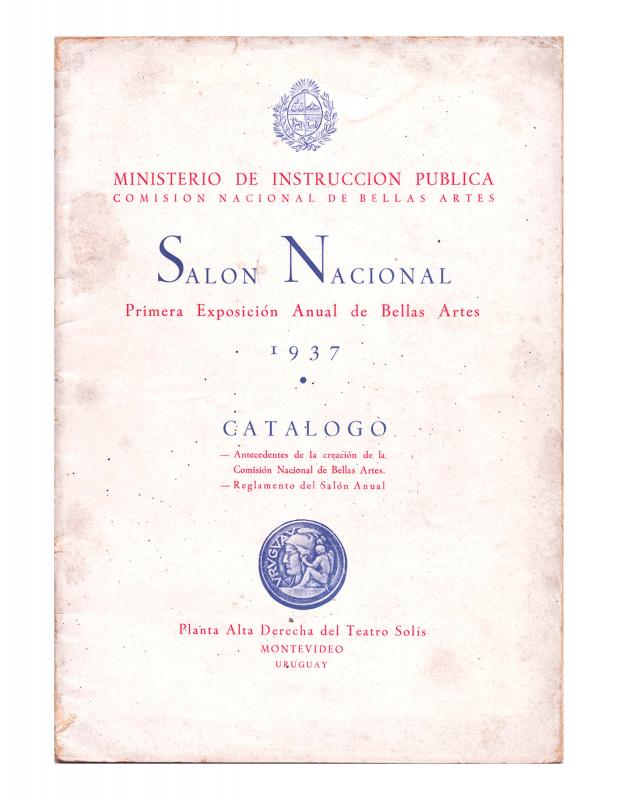The most significant item in this catalogue is the statement of principles, in which the artists state that they wish to remain unencumbered by government opinions on aesthetic matters, believing that the protection of the State is superfluous to artistic expression. They are basically critical of the election of exhibition juries on political grounds; this means offering significant prizes to attract people to this event, especially given the existence of a dictatorial government. Though the statement does not clearly express any specifically political-partisan critiques of authoritarianism as such, there is a clear political subtext that rebukes the moral character of such tactics, and champions the ethics of the practice of art and, in particular, its legitimacy. These ideas reveal the existence of an artistic community that aspired to aesthetic autonomy and a professional approach to art criticism, both of which were threatened by the world of “government connections” and by the opinions of juries that were more aligned with the political goals of the national government that the cultural goals of the country’s independent cultural institutions. Government quid pro quo and nepotism were the order of the day: according to the statement, “the quality of art has never suckled at the government teat; it has always been the child of its creator’s aspirations and of his profound love for freedom of the spirit (…).” Meanwhile, the tribute to the painter Milo Beretta extols in him the sort of values upheld in the statement: solidarity, independence from government protection, a solitary spirit, and anti-academicism, among other qualities that are relevant to an aesthetic axiology that can only suckle art itself.
[For additional information, see the following articles in the ICAA digital archive: issued by the Poder Ejecutivo [Executive Branch], Montevideo, Uruguay, “Decreto del P. E. que instituye la Comisión Nacional de Bellas Artes” (doc. no. 1186589); and authorized by the Poder Ejecutivo [Executive Branch], Ministerio de Instrucción Pública y Previsión Social, “Reglamento del Salón [Primer Salón Nacional de Bellas Artes, Montevideo, 1936” (doc. no. 1186660)].


